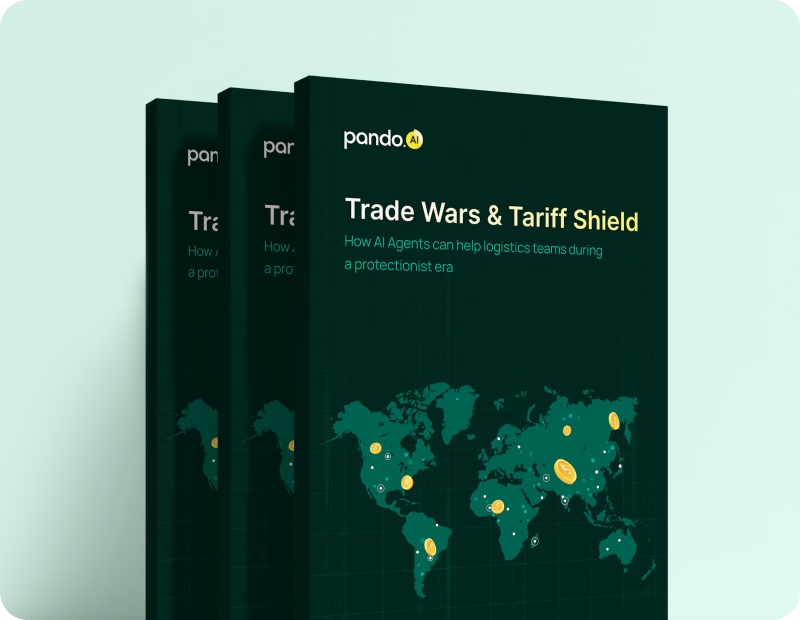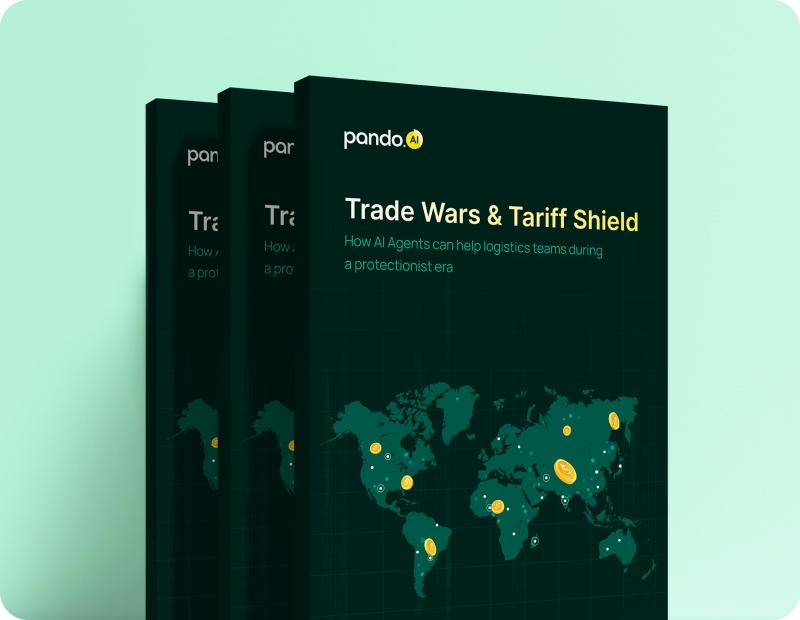-
Products Products
- Industry
- Initiatives
- Resources
- Company
- Book a demo

Before you go: Logistics leaders just dropped the truth on AI
The State of AI in Logistics 2025 is here — no hype, just real conversations and raw insights.
Bringing logistics in-house: A strategic decision for automotive companies
Could outsourcing logistics be undermining your control and customer loyalty? Read on.
Published on August 26, 2024 • 7 mins read
Durga Pratiha

Could outsourcing logistics be undermining your control and customer loyalty? Read on.
When you think about the automotive industry, it’s easy to focus on the cars themselves—the design, the engineering, the branding. But behind every car rolling off the production line is a complex supply chain and logistics network that ensures each part arrives on time, every time. This intricate system is the backbone of the industry, enabling manufacturers to meet production targets, manage costs, and deliver vehicles to customers efficiently.
Many automotive companies have traditionally relied on third-party logistics providers (3PLs) or even fourth-party logistics providers (4PLs) to manage these operations. Outsourcing logistics can offer expertise, technology, and cost savings that are hard to match in-house. However, the industry is evolving, and some companies are finding that the once-clear advantages of outsourcing are starting to blur.
As market dynamics shift, with increasing pressures for faster delivery times, tighter quality control, and greater flexibility, the question arises: is it time to take logistics back in-house? Understanding the key characteristics of automotive logistics, the reasons driving this potential shift, and the challenges it presents will give you a clearer picture of why some companies are reconsidering their logistics strategies and what it means for the future of the industry.
Key characteristics of automotive supply chain and logistics
In the automotive industry, the supply chain isn't just about moving parts from point A to point B. It's a finely tuned system where timing is everything. You've got just-in-time (JIT) delivery models that aim to minimize inventory costs by receiving parts only when needed. The network spans the globe, involving multiple suppliers, manufacturers, and distributors. And then, there’s the complexity of dealing with a vast variety of parts—from tiny screws to large body panels, each with its own handling and storage requirements.
This global complexity is compounded by the high-value, specialized nature of automotive cargo, increasing demands for customization, and the need for efficient aftermarket parts distribution. Moreover, you're facing growing pressures for sustainability and the integration of advanced technologies like RFID tracking. All these factors make automotive logistics a uniquely challenging field, requiring sophisticated management strategies to maintain efficiency and competitiveness in an ever-evolving industry landscape.
Why insourcing might be the right move
For years, automotive OEMs and Tier 1 suppliers have relied on these third-party providers to handle their logistics, tapping into their specialized expertise and economies of scale. But as the industry evolves, there's a noticeable shift happening—many are reconsidering and choosing to insource again. Well, here are a few key reasons:
- Gaining visibility and control: As supply chain volatility increases, automotive companies want tighter control and real-time visibility over their logistics operations. Insourcing allows you to closely monitor shipments, identify bottlenecks, and make agile decisions.
- Enhancing customer service: With consumers demanding faster delivery and more customization, having logistics in-house enables you to be more responsive to customer needs. You can optimize transportation, inventory, and order fulfillment processes.
- Protecting intellectual property: Some automotive companies are wary of outsourcing logistics due to concerns over protecting sensitive data and intellectual property. Insourcing mitigates these risks.
- Improving sustainability: There is growing pressure to reduce the environmental impact of automotive supply chains. By insourcing, you can better control priorities.
Challenges and business impact of insourcing
While the benefits of insourcing logistics are compelling, it also presents some challenges for automotive companies:
- Significant capital investment: Building in-house logistics capabilities requires substantial upfront investment in transportation assets, warehousing, technology, and talent.
- Operational complexity: Managing end-to-end logistics internally adds complexity to your operations. You must develop new competencies in areas like route optimization and fleet management.
- Scalability constraints: Insourcing may limit your flexibility to scale logistics capacity up or down based on demand fluctuations, unlike working with a 3PL.
- Technology integration challenges: Seamlessly integrating logistics-specific technologies like TMS, WMS, and fleet management systems with your existing manufacturing and ERP systems can be technically complex and time-consuming.
However, the business impact of insourcing can be substantial. By taking control of your logistics, you can improve delivery reliability, reduce costs, enhance customer satisfaction, and strengthen your competitive position in the market.
Why bringing logistics in-house could improve customer service
Despite these challenges, there are compelling reasons why a supply chain leader in the automotive industry might push to bring logistics in-house, especially as delivering exceptional customer service has become a key differentiator.
When you control your logistics operations directly, you’re in a better position to ensure that every aspect of the supply chain aligns with your customer service objectives. Here’s how:
1. Enhanced responsiveness: In-house logistics allows you to react more swiftly to changes in customer demand or unexpected disruptions. For instance, if a customer needs their vehicle sooner than expected, having direct control over your logistics network means you can make real-time adjustments to prioritize their order. This level of responsiveness is much harder to achieve when working with an external logistics provider, who may have other clients and commitments.
2. Consistency in service: Outsourced logistics providers typically serve multiple clients, each with their own set of priorities. This can sometimes lead to inconsistent service levels. By bringing logistics in-house, you can establish and maintain a consistent standard of service across all operations, ensuring that every customer receives the same high level of care and attention.
3. Personalized customer experiences: Today’s customers value personalization. With in-house logistics, you have the flexibility to offer tailored delivery options, such as scheduling deliveries at the customer’s convenience or offering special handling for high-value vehicles. This kind of personalized service can significantly enhance customer satisfaction and loyalty.
4. Improved communication: Direct control over logistics operations allows for better communication between your logistics team and customer service representatives. When there’s an issue, your team can quickly access real-time data to provide customers with accurate updates and solutions. This seamless communication can reduce customer frustration and build trust in your brand.
5. Better quality control: In the automotive industry, quality is non-negotiable. By insourcing logistics, you can implement stricter quality control measures at every stage of the delivery process. From ensuring that parts are handled properly to minimizing the risk of damage during transportation, better control over logistics can directly translate to higher product quality when it reaches the customer.
6. Proactive problem solving: Issues like delayed deliveries or incorrect orders can damage your brand’s reputation. In-house logistics teams are more integrated with your overall operations, enabling them to anticipate and address potential problems before they affect the customer. This proactive approach can help you avoid costly mistakes and keep your customers happy.
7. Direct feedback loop: When your logistics operations are in-house, it’s easier to establish a direct feedback loop between the logistics team and the customer service department. This can lead to continuous improvements in both areas, as insights from customer interactions can be quickly fed back into logistics processes, resulting in ongoing enhancements that benefit the customer.
Industry trends influencing insourcing decisions
Several key automotive industry trends are motivating supply chain leaders to bring logistics back in-house:
- Heightened supply chain volatility: Recent disruptive events like the semiconductor chip shortage have exposed vulnerabilities in outsourced logistics models. For instance, Tesla's decision to insource much of its logistics operations has helped it navigate supply chain disruptions more effectively. During the chip shortage, Tesla was able to quickly rewrite software to support alternative chips, a move facilitated by its tight control over its supply chain and logistics. By insourcing, you gain direct control and visibility over transportation and warehousing operations, enabling faster responses to supply chain disruptions.
- Advanced supply chain technologies: Investments in technologies like AI-driven route optimization, warehouse automation, and predictive analytics are making it more feasible for you to effectively manage logistics operations in-house. For example, BMW has implemented an AI-powered demand prediction system for its spare parts logistics, which has improved forecast accuracy by up to 30%. This kind of technology integration is often easier to achieve when logistics are managed in-house.
- Customization and flexibility: As the automotive industry moves towards more customized vehicles and faster delivery times, having direct control over logistics allows you to be more responsive to changing customer demands. Volkswagen's industrial cloud project, which aims to connect all its 124 manufacturing plants to a single digital platform, demonstrates the power of insourced, integrated logistics. This system allows VW to optimize production and logistics in real-time, supporting their push towards mass customization.
Another example is Rivian, the electric vehicle manufacturer, which has chosen to manage its delivery fleet for customer vehicles. This allows Rivian to control the entire customer experience, from order to delivery, ensuring a high-quality, consistent process that aligns with their brand promise.
The decision to insource logistics in the automotive industry is a complex one that requires careful consideration of various factors. While there are significant challenges involved, the potential benefits in terms of control, efficiency, flexibility, and customer service can make it a worthwhile investment for many companies. As the automotive industry continues to evolve, the trend towards insourcing logistics is likely to persist.
Subscribe to Pando blog and Crossroads newsletter now!
Stay up to date with the latest logistics, transportation, and supply chain tips and news.
Subscribe Here!

Related blogs
Gears in motion: Decoding the unique logistics challenges of the automotive sector – Part 1

Gears in motion: Decoding the unique logistics challenges of the automotive sector – Part 2











